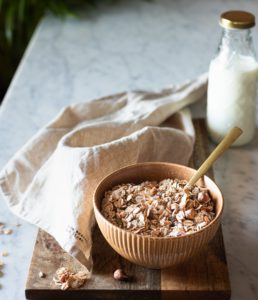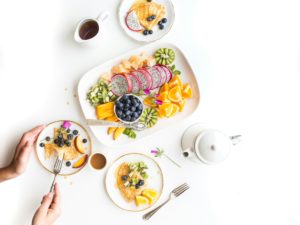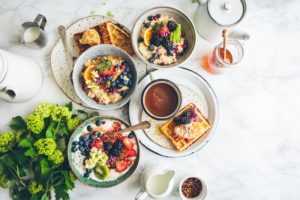Low Calorie, High Nutrition Foods- 20 Things to Eat That Will Fill You Up
If you are trying to lose weight, chances are you have dealt with hunger. That just isn’t fair. Eating 12 almonds and going about your day isn’t practical.

Weight loss is about more than just calories in, calories out. Quality and quantity have to be taken into consideration. By choosing low-calorie food high in fiber and protein, you can eat large portion sizes to fill you up and keep you satisfied.
Below are options that are low carb, though some good options higher in carbs are given at the end such as black beans, a legume that is high in fiber and important nutrients. Food higher in carbs can definitely be eaten on a weight-loss journey as long as we watch our portion size.
Low Carb, Low Calorie
Low carb options are a great way to fill up and stay satisfied for long periods. They tend to be high in fiber, a prebiotic important for our gut microbiota.
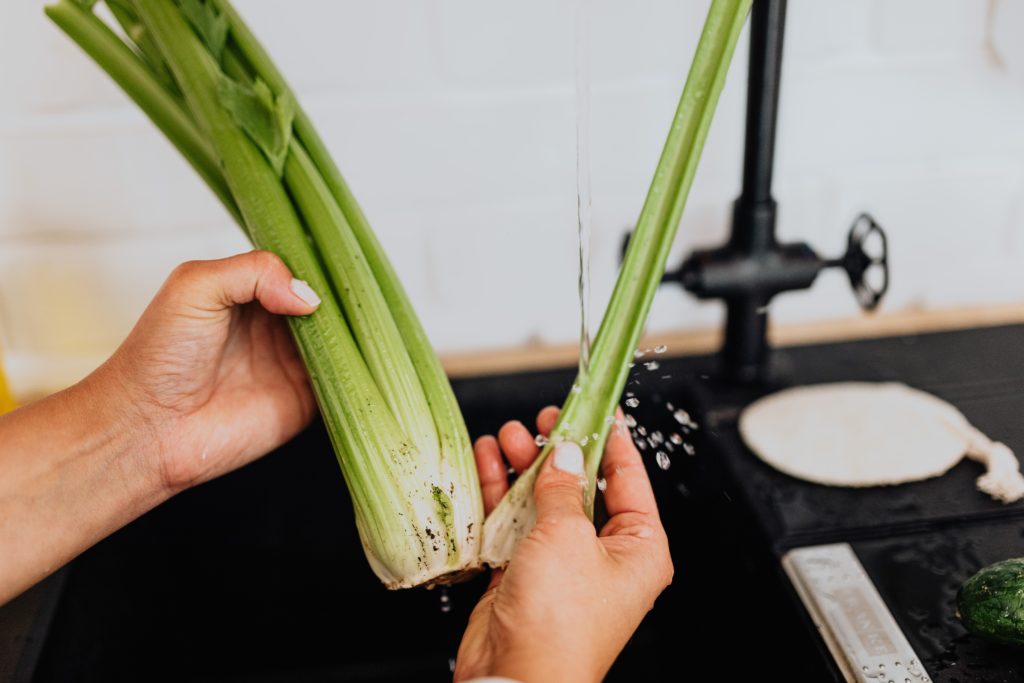
Celery
Celery is one of the foods lowest in calories, with about 5 calories per stalk. The whole food fills you up due to the fiber when compared to a green juice made of celery, so try to eat the entire veggie!
It has folate, a B Vitamin essential for cells, potassium, an electrolyte that helps your heart function, and other vitamins like C and A.

Cucumber
One entire cucumber, unpeeled, has 30 calories, with 3 grams of protein and 2 grams of fiber. It has high amounts of Vitamin K, a key nutrient for healing wounds and keeping bones healthy!

Spinach
Did you know 5 cups of spinach has about 33 calories? That’s more than anyone will eat in one sitting! It is high in fiber and protein, helping to keep you satisfied for longer periods of time as well. Spinach is a great source of potassium, magnesium, and folate.
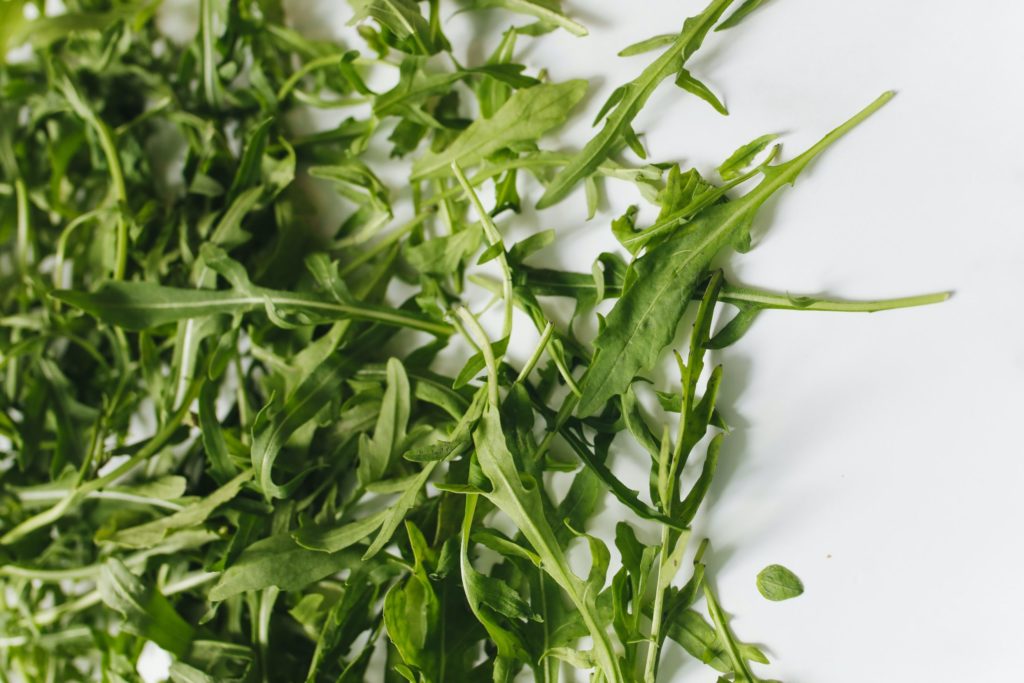
Arugula
Like spinach, you can eat a bunch of this leafy green! 5 cups have just 25 calories! Arugula is high in protein and fiber, keeping you full longer. It also has iron, phosphorus, magnesium, and many more vital nutrients.
Iron is essential to oxygenating the body, while magnesium and phosphorus help support bone and tissue health.
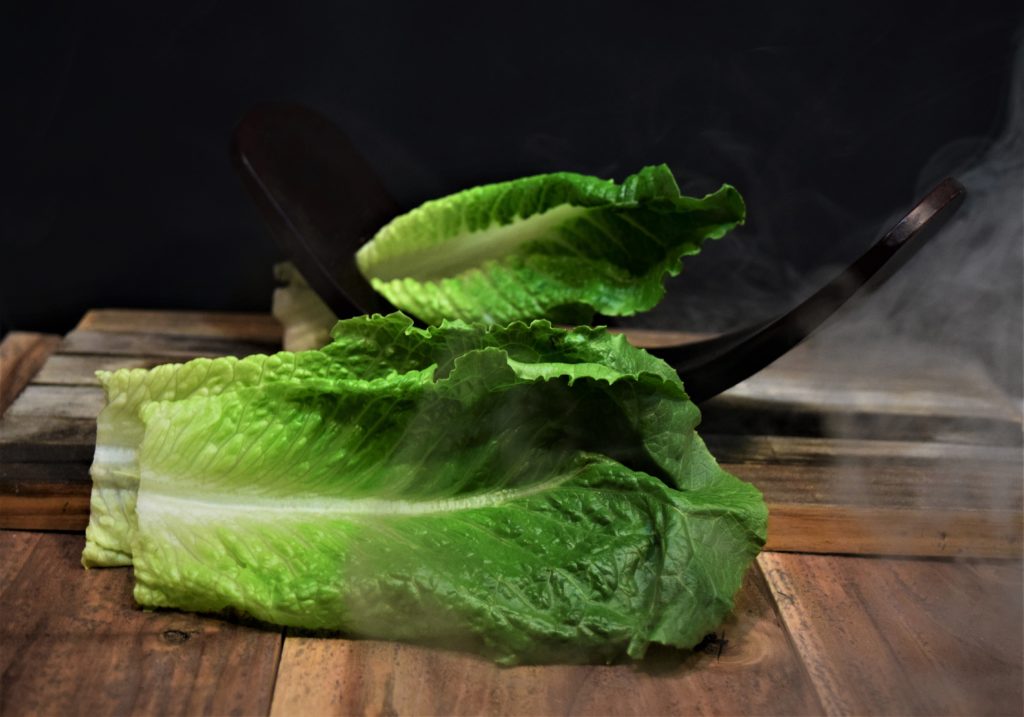
Lettuce
Lettuce is amazing, with only 5 calories per cup. It is low in sugar, carbs, and high in nutrition. Lettuce has vitamins C, A, and K, as well as folate, phosphorus, magnesium, and potassium.
Plus, it’s actually a great way to hydrate, being high in water.
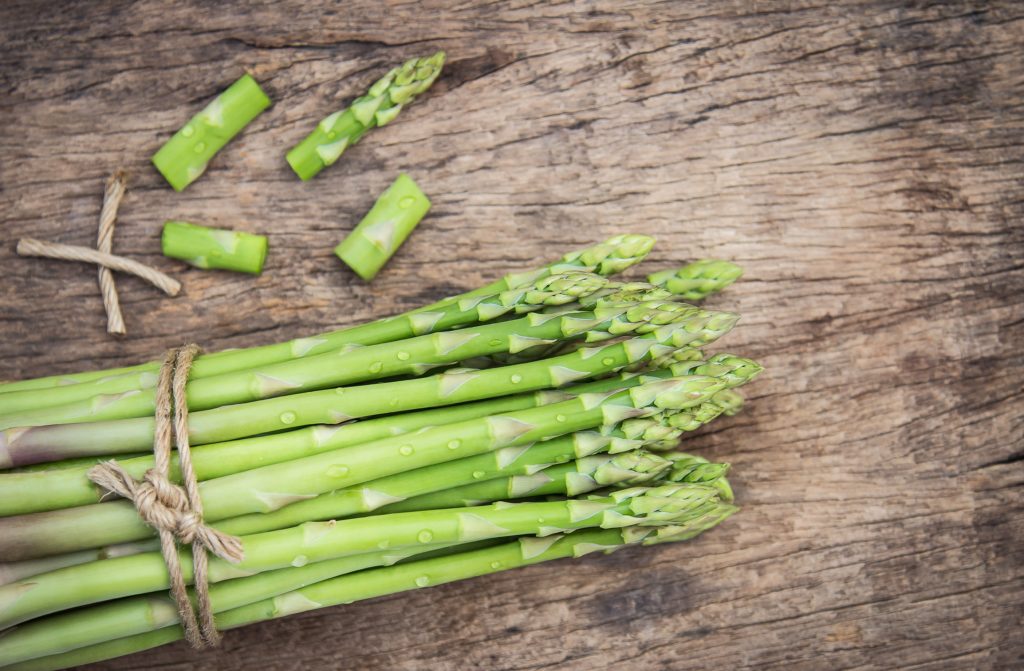
Asparagus
Asparagus has a bunch of vitamins, like E, A, K, and C. Just one stick has but 3 tiny calories and is relatively high in fiber and nutrition.
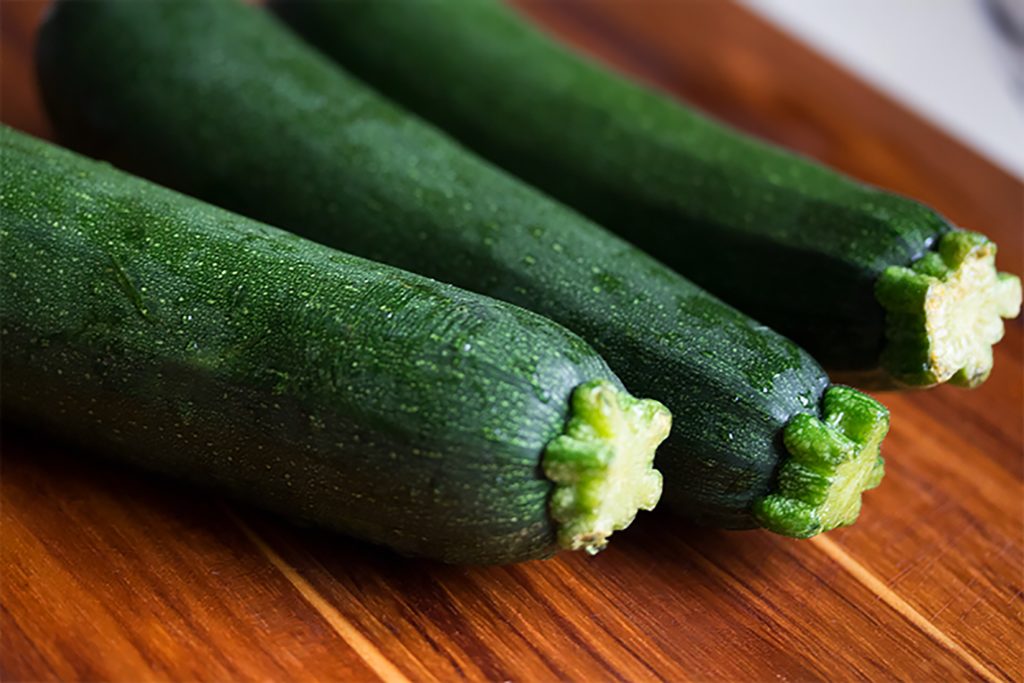
Zucchini
Zucchinis are high in fiber with just 62 calories per cup. They can be used to replace flour noodles (zoodles, if you will) and fill you up! Zucchinis are packed with vitamins, minerals, and antioxidants.
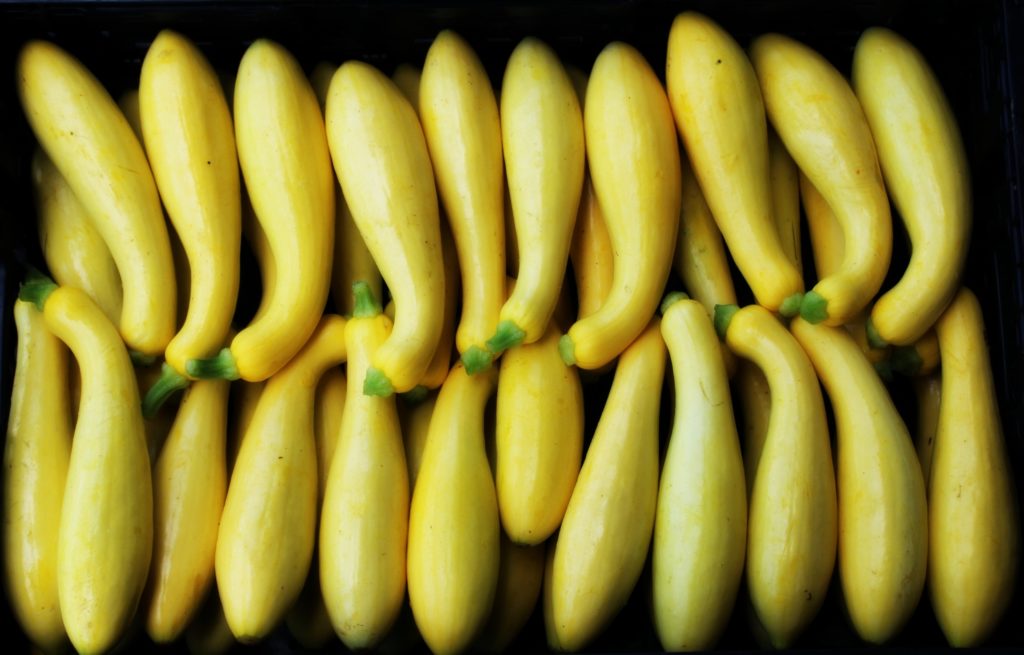
Yellow Squash
Like zucchini, yellow squash can be spiralized to form noodles. It is an amazing addition to any meal with a subtle neutral flavor. They are high in vitamin C, a necessary nutrient for body repairs and growth.

Cauliflower
Cauliflowers have just 27 calories per cup! They are high in potassium, Vitamin C, and plant-based omega 3.
They can be a great substitute for high-carb foods, simply by making riced cauliflower, mashed potato cauliflower, or even a pizza crust!
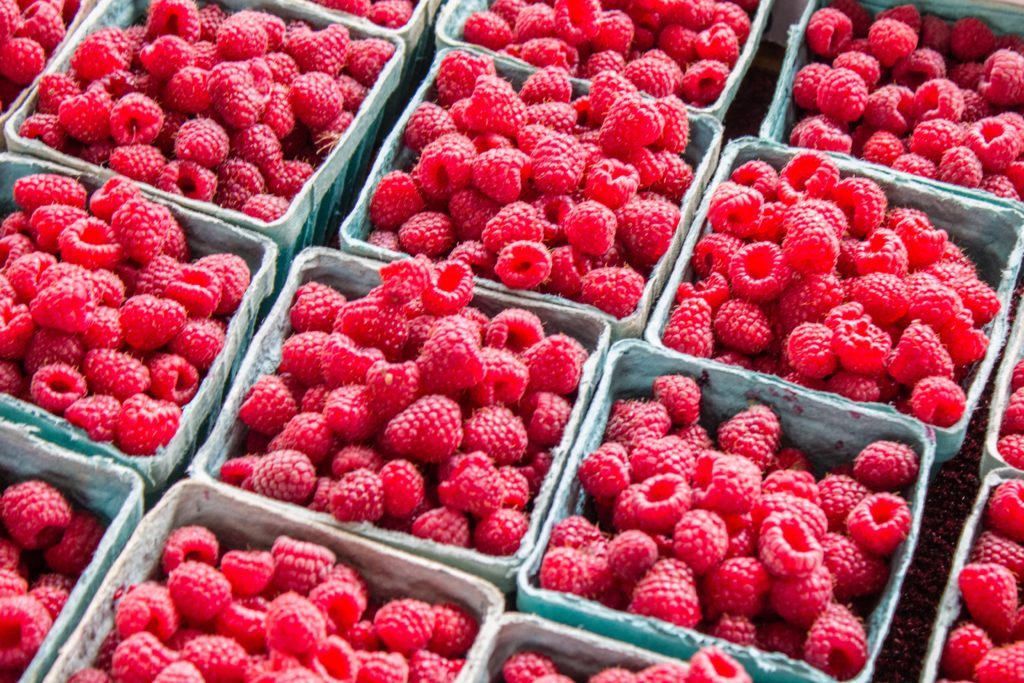
Raspberries
Raspberries are an amazing low calories option for people who crave something sweet and filling.
1 cup has but 64 calories. Raspberries are high in fiber and Vitamin C.
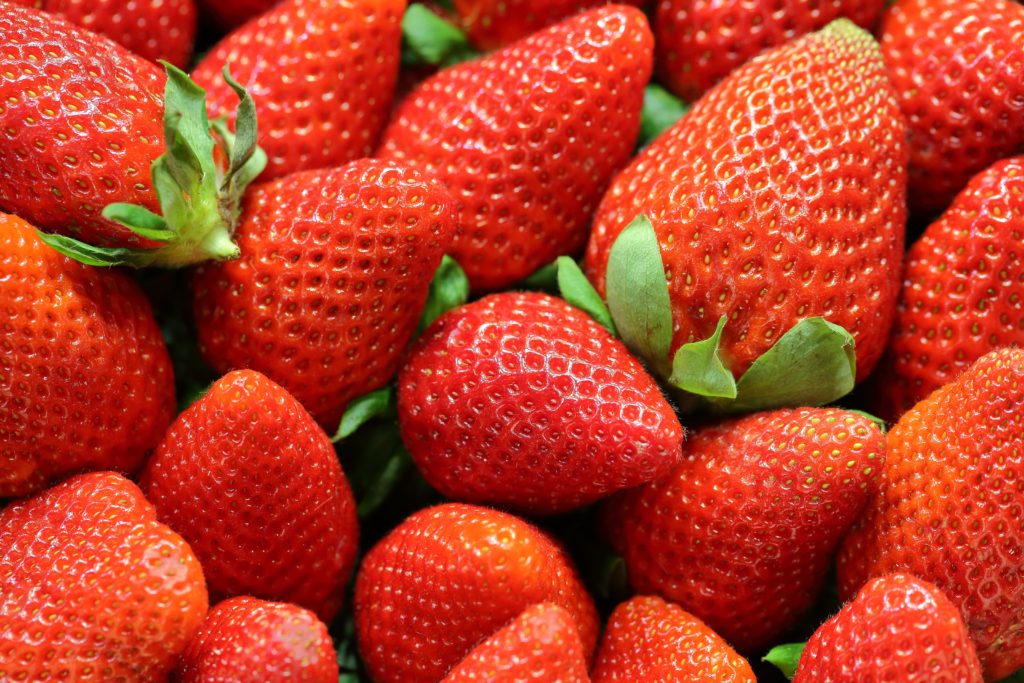
Strawberries
Another great option, strawberries have about 50 calories per sliced cup. They too are high in fiber, particularly pectin, a fiber that allows you to feel fuller longer.
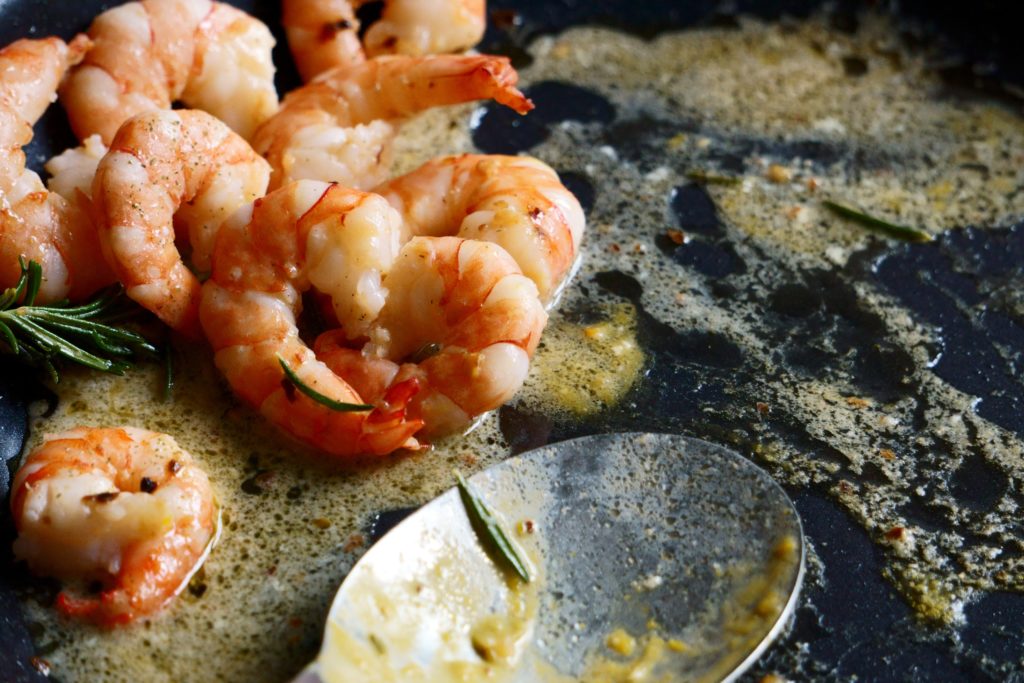
Shrimp
Shrimp has about 84 calories per serving (85 grams or 3 ounces). They have no carbs and are incredibly high in protein.
There are about 20 different minerals and nutrients in shrimp, some of which can help promote health and reduce inflammation. These include Vitamin B12, zinc, magnesium, niacin, iron, and phosphorus.
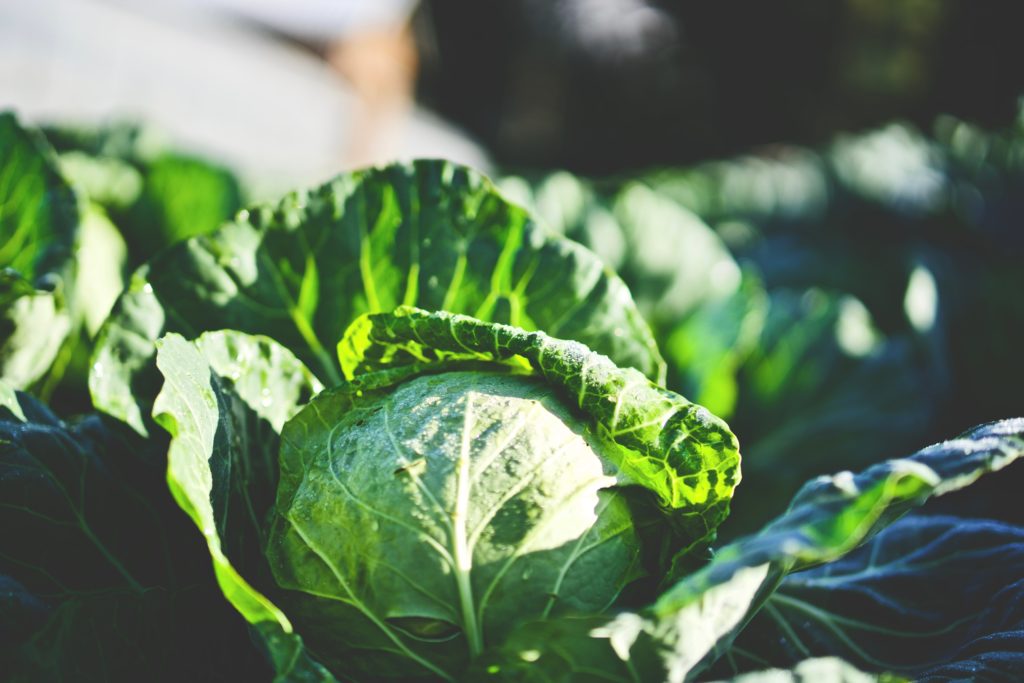
Cabbage
1 cup of cabbage (shredded) only has 18 calories! It is a great way to add nutrition to any dish, like a stir fry, soup, or noodle dish.
Cabbage is high in fiber and Vitamin C and K. It also contains calcium, potassium, magnesium, and much more!
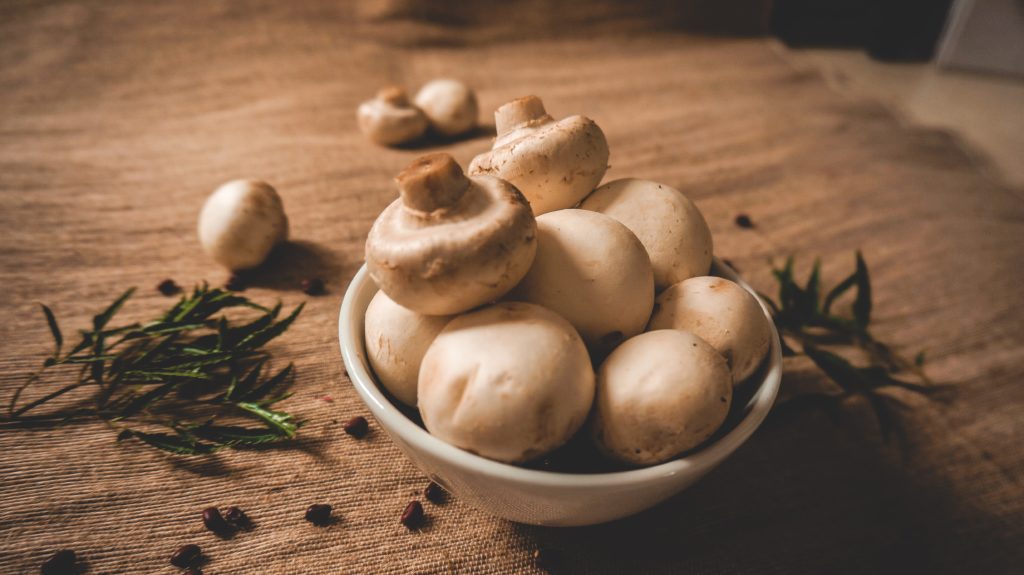
Mushrooms
1 cup of mushrooms has 21 calories! They are high in protein and fiber as well. Some nutrients it has include potassium and iron, both essential to wellbeing.
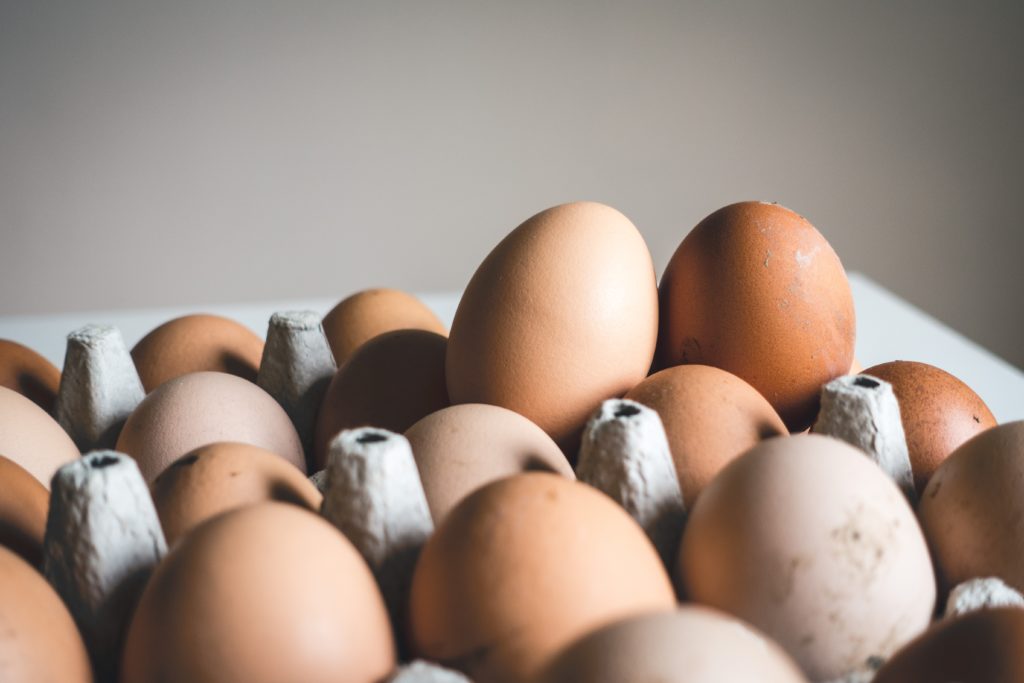
Eggs
1 large egg has 70 calories. They are a great source of protein and are filling, keeping you satisfied throughout the day. It has iron, and many vitamins and minerals.
Furthermore, egg whites have virtually no fat and only 17 calories per egg. Egg whites contain leucine, an amino acid that may promote weight loss.
Higher in Carbs, Still Low Calorie
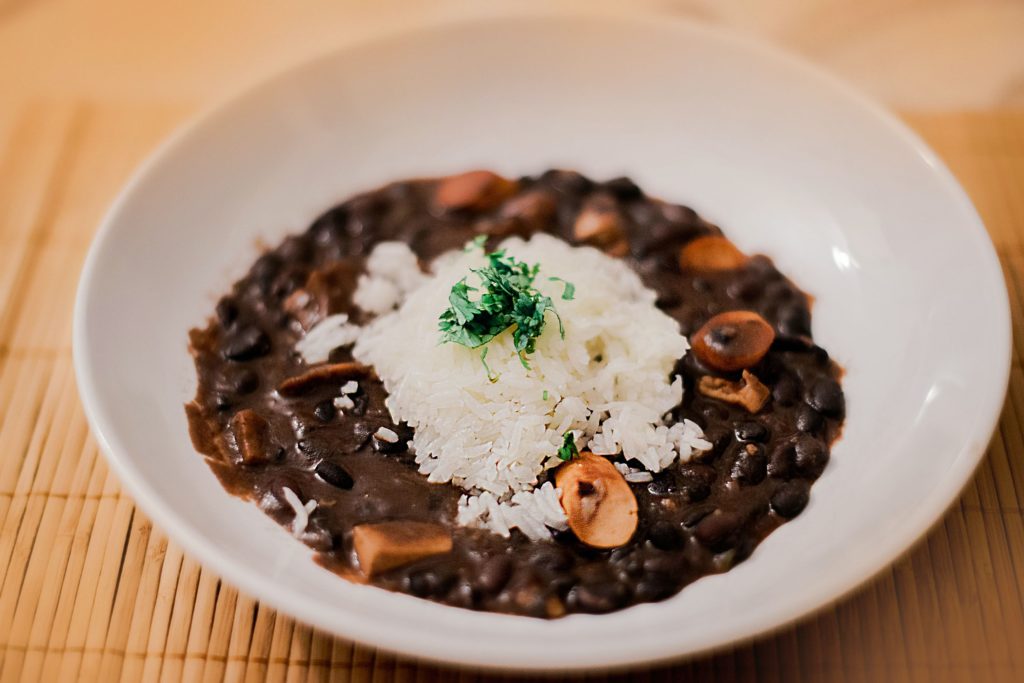
Black Beans
Black beans have 114 calories per half cup, making them one of the lowest-calorie legume options. They are high in protein and fiber, helping to keep you satisfied for long periods of time.
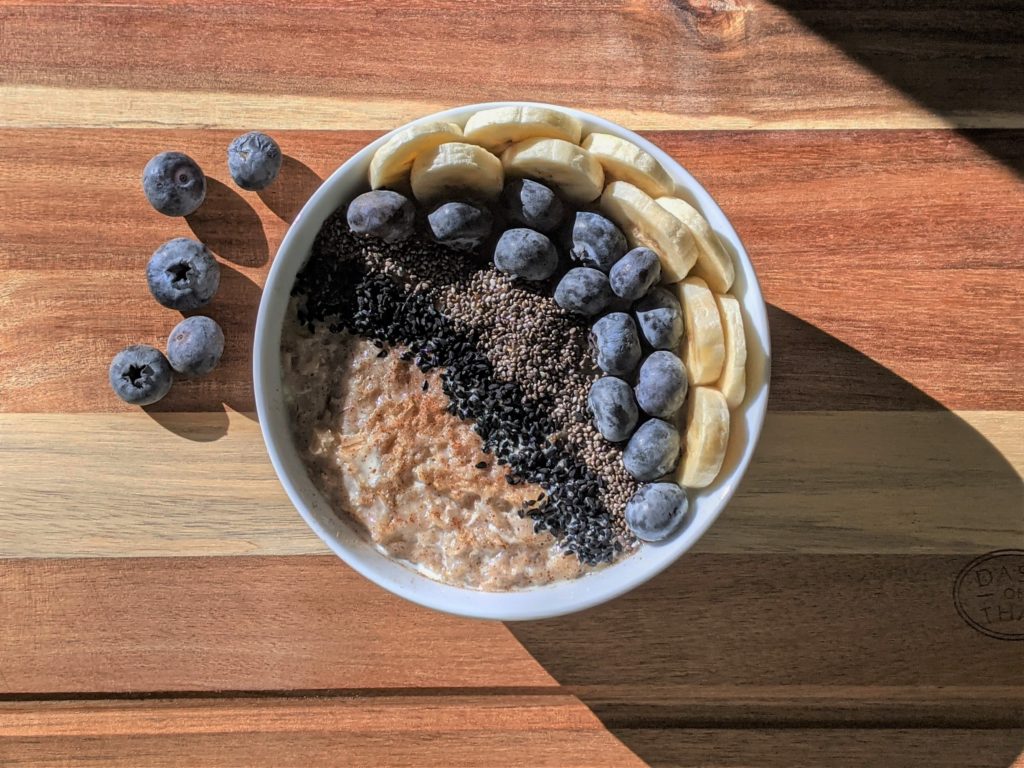
Oatmeal
1 cup of oatmeal has 150 calories. It contains more protein than other grains and has many vitamins and minerals.
Not only that, but it is high in antioxidants that prevent inflammation and improve heart health.

Apples
1 apple has 100 calories and about 4 grams of fiber. They are high in iron, Vitamin C, and B6. However, they are also high in sugar, which is why portion size should be watched for

Popcorn
3 cups of popcorn (popped without oil) has only 93 calories! Wow! Though I don’t find it filling, it is a great option if you want to eat hundreds of something.
It is high in magnesium and Vitamin B6, which is an awesome plus.
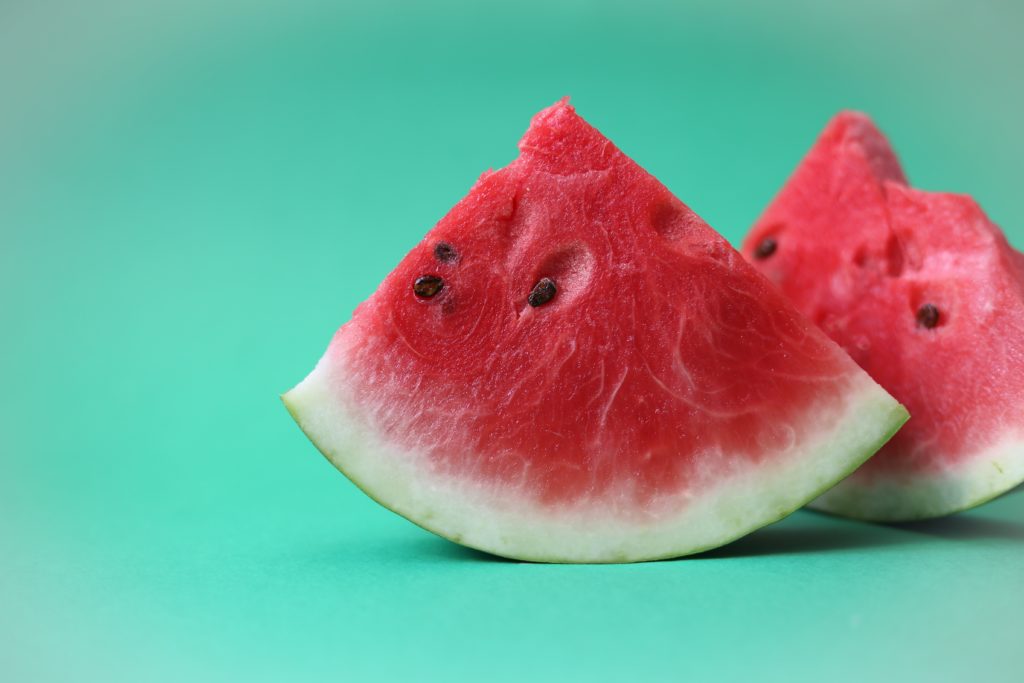
Watermelon
Watermelon is a cool, sweet option, with lovely summer vibes. 1 cup of diced watermelon has 46 calories and a lot of Vitamin C!
The Takeaway
Low-calorie food options can be very filling and nutritious, increasing fitness and overall wellbeing. If you are trying to lose, maintain, or even gain weight, it is important to note portion size, adjusted to your height, age, and goals preferably.
Make sure to eat a colorful rainbow of ingredients for microbiota health, which can lead to improving physical, mental, and emotional wellbeing.
Find more information on how to try a low-carb diet here, and learn about carb cycling to get all your food groups in your day-to-day meals!
